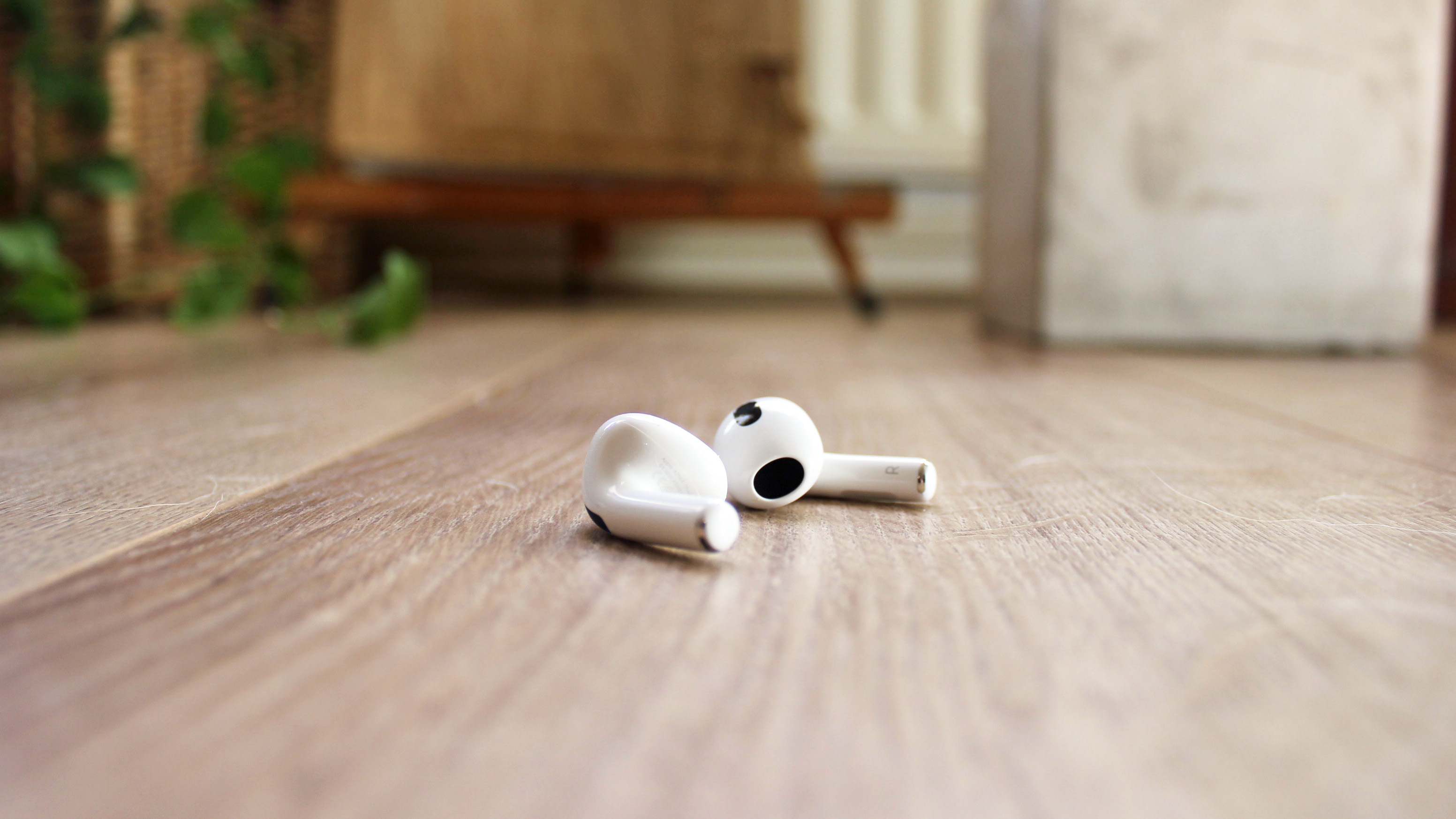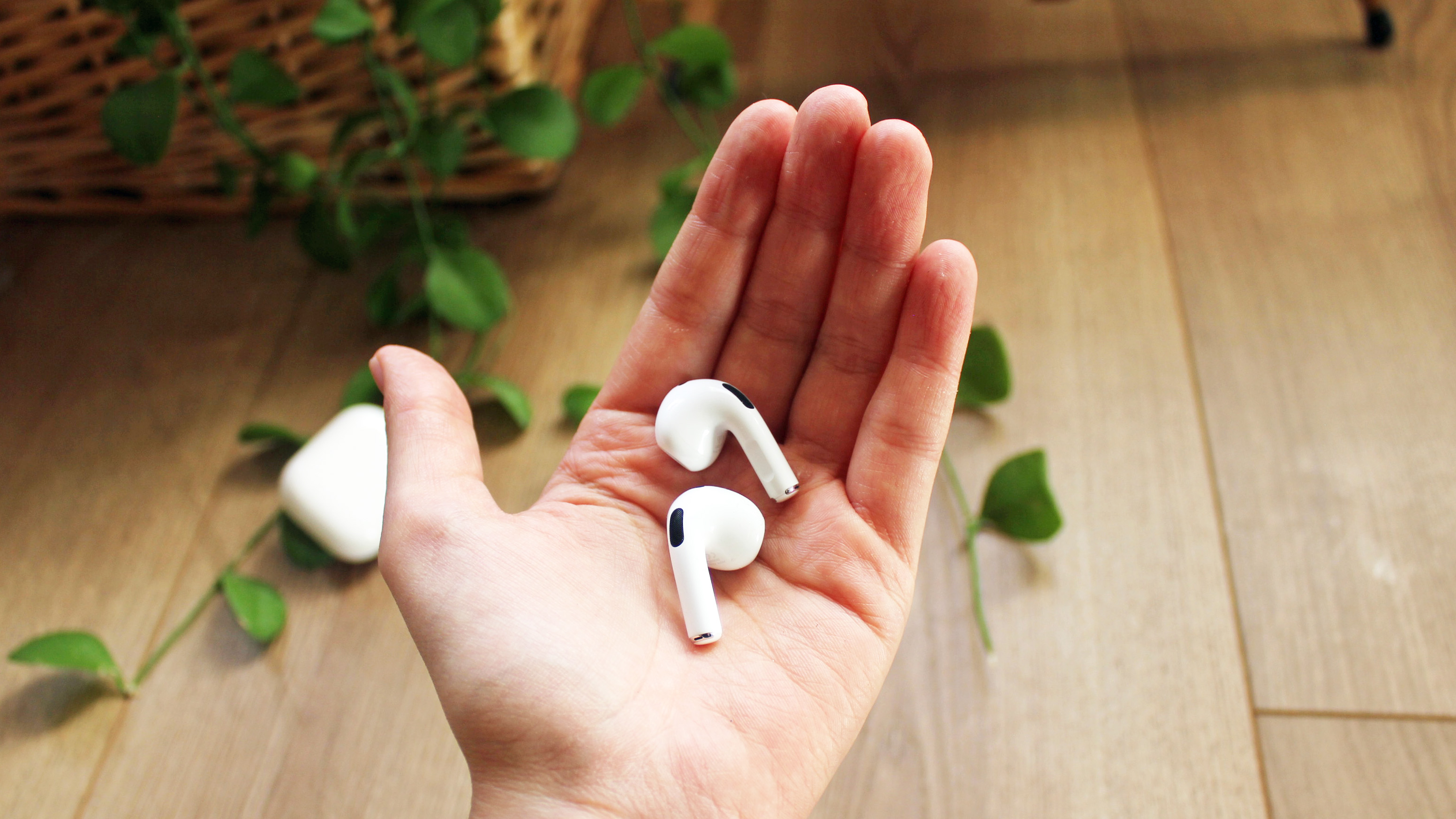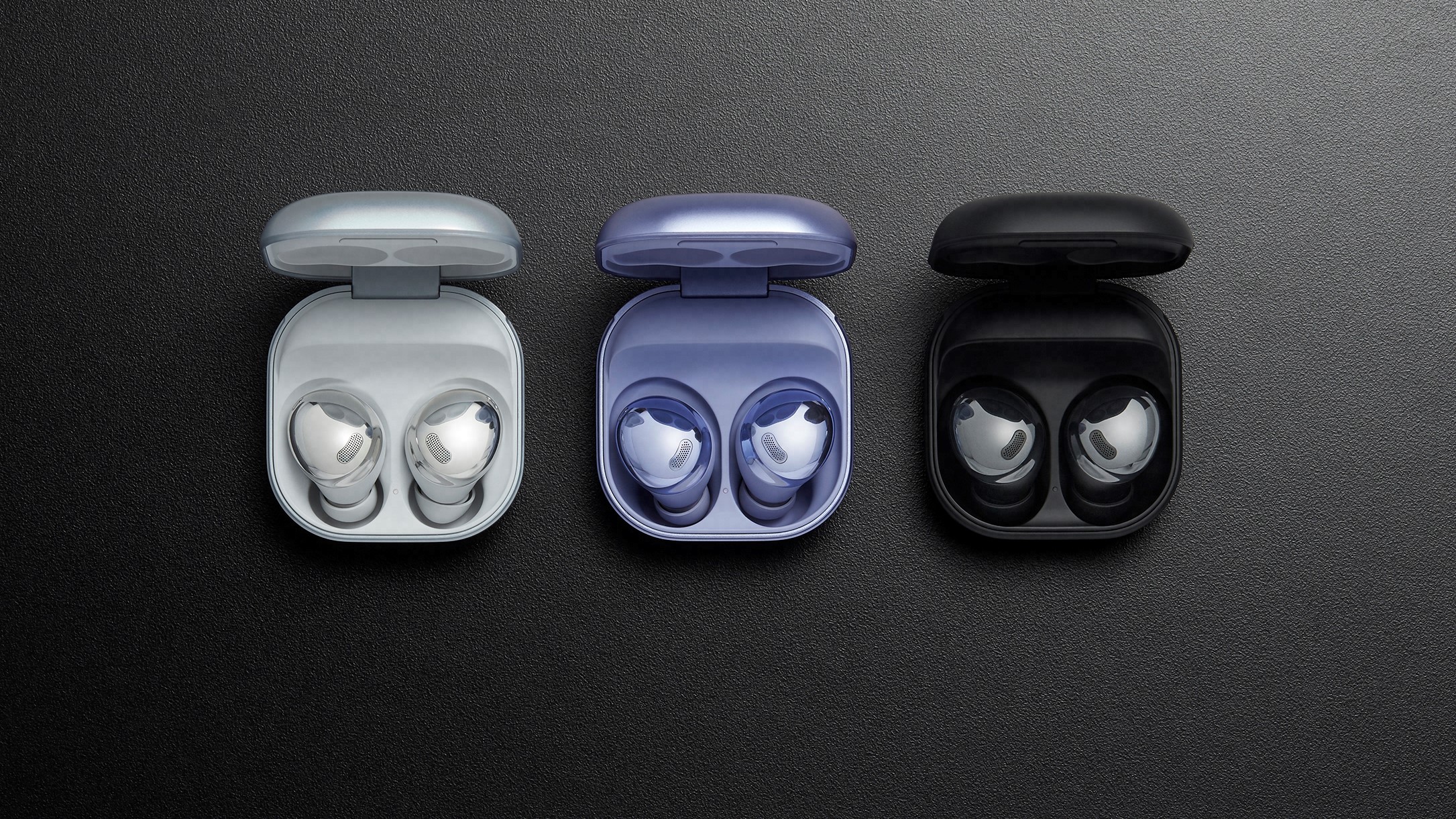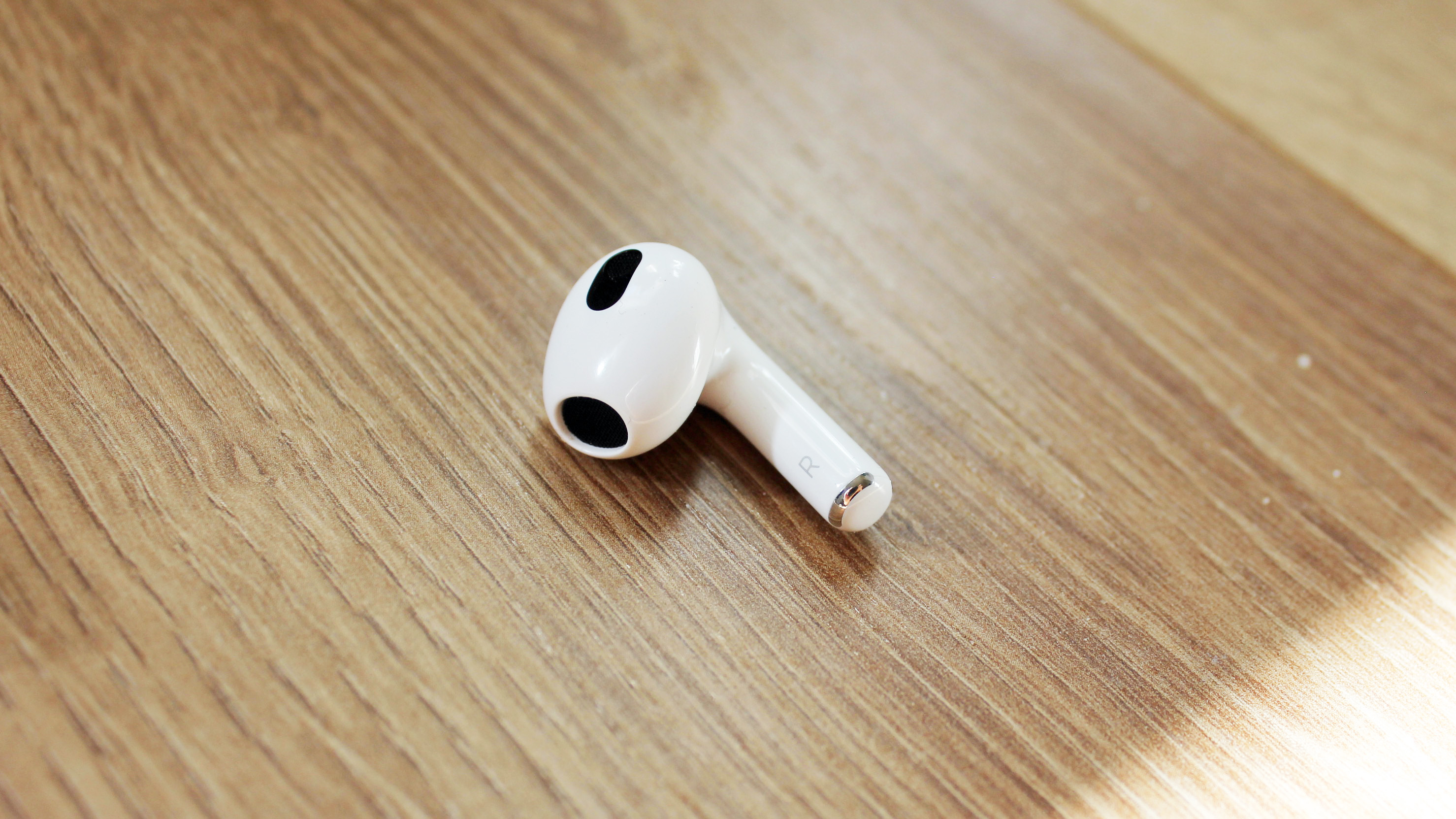AirPods 3 vs Samsung Galaxy Buds Pro: the true wireless earbuds compared
Here’s what you need to know about the Apple AirPods 3 and the Galaxy Buds Pro

The Apple AirPods 3 have arrived and the big question is, how do they compare with many of our favorite true wireless earbuds? We’re pitting them against the Samsung Galaxy Buds Pro to find out which ones you should buy.
The Apple AirPods 3 are the highly-anticipated follow-up to the 2019 Apple AirPods - not to be confused with the Apple AirPods Pro, which also launched in 2019. The Pro buds are more high spec with support for active noise cancellation – something the AirPods 3 don't have.
However, the Apple AirPods 3 are more affordable, and draw inspiration from the mass-appeal design of the original AirPods. During our testing, we were impressed with the immersive spatial audio on offer, comfortable fit, and ease of use, awarding them 4 out of 5 stars. Saying that, with no noise cancellation, no customizable eartips and a so-so battery life, they’re not the best true wireless earbuds you can buy – especially if you have an Android device.
The Samsung Galaxy Buds Pro are among our top-rated true wireless earbud picks – bagging 4 out of 5 stars when we tested them. We liked the basic noise cancellation, audio performance and waterproofing, but they’re not perfect and much more likely to appeal to those with Samsung phones.
So which model is better, the AirPods 3 or the Samsung Galaxy Buds Pro? Does one pair of wireless earbuds outperform the other or is this a case of choosing your next buds based on your smartphone? Read on to find out.

AirPods 3 vs Samsung Galaxy Buds Pro: price
The Apple AirPods 3 cost $179 / £169 / AU$279. That price is cheaper than the AirPods Pro, which will set you back $249 / £249 / AU$399, although that’s to be expected given the Pro are the high-end option.
The AirPods 3 are more similar in price to the 2019 AirPods, which cost $159 / £159 / AU$249 with the standard charging case, and $199 / £199 / AU$319 with the wireless charging case when they launched a couple of years ago (though they’ve since been given a permanent price cut).
Sign up for breaking news, reviews, opinion, top tech deals, and more.
Although this price isn’t cheap, it matches up with many of the middle-grade to high-end true wireless earbuds you can buy today. And it’s good to see Apple has kept prices for the regular AirPods on a level that’s more affordable than the Pro.

In comparison, the Samsung Galaxy Buds Pro cost $199 / £219 / AU$349. Although not quite as expensive as the higher-end options from the likes of Sony, Bose and Sennheiser, these are still a pricey pair of earbuds. If you’re looking for cheaper alternatives, you don’t have to look far: the Sony WF-SP800N and Jabra Elite 75t both offer active noise cancellation for $50 less if you don’t mind skipping out on the Samsung-specific features.
Although the Apple AirPods 3 are cheaper, the question of which is better value will depend on what you’re looking for, as these two pairs of buds have different things to offer in terms of design, performance and additional features.
AirPods 3 vs Samsung Galaxy Buds Pro: design
Whether you prefer the design of the AirPods 3 vs Samsung Galaxy Buds Pro will depend on your personal preference. Do you want the obviously Apple design of the AirPods with their stems or the shiny chrome Galaxy Buds Pro that sit closer to your ear?
The Apple AirPods 3 look like the 2019 AirPods, but there are some subtle differences. For starters, the stems of the AirPods 3 are shorter, the housing is rounded and more streamlined, and they feature force sensors you squeeze to control your music and phone calls. They also now have an IPX4 water resistance rating, which makes them suitable to wear to the gym or when you’re working out.
They lack interchangeable eartips, which means the fit isn’t super snug. Although we did find them comfortable to wear, we wouldn’t recommend them for intense exercise.

The Samsung Galaxy Buds Pro look completely different to the AirPods 3, with a rounded design available in three colors: Phantom Black, Phantom Silver and Phantom Violet, all have a high shine finish.
They’re fairly large for earbuds, measuring in at just under an inch (20.8mm) long. Although they don’t obviously stick out of your ear like the AirPods 3, they can look a little awkward and bulky.
The Galaxy Buds also jut out of your ear and during testing we had some trouble keeping them fully secure – luckily they do come with extra eartips, so it’s worth trying out all the options to see which give you the comfiest fit
However, they’re comfortable to wear for extended periods of time and don’t suffer from pressure build up thanks to an external vent.

AirPods 3 vs Samsung Galaxy Buds Pro: battery life
The Apple AirPods 3 offer a maximum battery life of 30 hours with the charging case, which supports wireless charging and is MagSafe-compatible. If you're in a hurry, a quick five-minute charge will give you about an hour of playback.
The onboard battery life is around six hours, which drops to five hours if you have Spatial Audio enabled.
As the Samsung Galaxy Buds Pro have noise cancellation on-board, the battery life will depend on if you’re using it or not.
Samsung promises five hours of listening on one cycle, after which the charging case can provide an additional 13 hours if you have ANC turned on. If you turn it off the buds will last seven to eight hours, and you can get upwards of 20 hours of battery from the case.
They also support fast charging and within five minutes on the charger there should be enough battery available for one hour of playback. Fast charging takes place via the USB-C port, but wireless charging is also possible, although it’s a bit slower.
In terms of battery life, the AirPods 3 are the overall winners, though there’s not much in it and the Galaxy Buds Pro have a longer onboard battery life.

AirPods 3 vs Samsung Galaxy Buds Pro: audio performance and features
The Apple AirPods 3 don’t offer noise cancellation, but we were impressed with the sound quality on offer here – a significant improvement over the second-gen AirPods. They come with new custom-made, low-distortion drivers and high dynamic range amplifiers.
They also offer Spatial Audio Support, placing sound in a 3D sphere around you to create a more immersive experience. They only support the SBC and AAC codecs, so you won’t be able to enjoy hi-res audio with the AirPods 3, but they’re not designed to be audiophile-grade headphones. Instead, they provide a perfectly enjoyable listening experience – particularly for music and films in Spatial Audio.
They also offer a bunch of additional features, like Audio Sharing, Announce Notifications, and integration with the Find My network, which all make the AirPods 3 a good option for use with an iPhone – but less appealing for anyone with an Android.

Most people will be happy with the sound offered by the Samsung Galaxy Buds Pro, but it isn’t class-leading. During our testing we found it to be lacking in detail and the soundstage was too narrow for our tastes. In other words, they won’t quite wow you like some higher-end earbuds would.
You can tweak the EQ of your Buds in the Samsung Wearable app – and we liked the Dynamic setting, but there isn’t the option to make the soundstage wider or fuller. Since their launch, Samsung has give the Galaxy Buds Pro 360 Audio support, which works similarly to Apple's Spatial Audio, but doesn't need a track to be mixed in 5.1 or above to work.
If you’re not listening to music with a Samsung Galaxy device, the sound of the Buds Pro will be transmitted over SBC or AAC, and both of these are lossy codecs. This means there’s a marked uptick in audio quality when you use them with Samsung’s Scalable Codec devices – like say the Samsung Galaxy Note 20 Ultra 5G – compared to a device that uses SBC, like the Google Pixel 3.
Although the Samsung Galaxy Buds Pro do offer noise cancellation, it isn’t the best. They offer solid noise reduction but it’s never going to be absolutely silent while you've got them on.

Takeaway
This is a close race and, as we predicted, largely depends on the phone you have.
If you have a Samsung phone you’ll get more from the Samsung Galaxy Buds Pro, with better audio quality, Bixby support and more. The design is also slightly more subtle and the audio is good, but not great.
On the other hand, the Apple AirPods 3 are better for those with an iPhone. Connecting to an iPhone is easy and there are a bunch of features that will appeal to those with Apple products already, including hands-free Hey Siri activation, Announce Notifications, Audio Sharing, Group Facetime with Spatial Audio and more.
You’ll also get the unmistakable Apple design with slighter shorter stems and rounded casing. The sound quality might not be able to compete with the best headphones on the market, but thanks to the new tech baked in and Spatial Audio Support, the AirPods 3 are a solid choice for most people.
One reason you may opt for the Galaxy Buds Pro over the AirPods 3 is the Samsung earbuds’ support for active noise cancellation. However, there are better noise-cancelling earbuds out there, such as the the Bose QuietComfort Earbuds, as well as lots of excellent noise-cancelling over-ear headphones.
- Read our guide to the best noise-cancelling headphones

Becca is a contributor to TechRadar, a freelance journalist and author. She’s been writing about consumer tech and popular science for more than ten years, covering all kinds of topics, including why robots have eyes and whether we’ll experience the overview effect one day. She’s particularly interested in VR/AR, wearables, digital health, space tech and chatting to experts and academics about the future. She’s contributed to TechRadar, T3, Wired, New Scientist, The Guardian, Inverse and many more. Her first book, Screen Time, came out in January 2021 with Bonnier Books. She loves science-fiction, brutalist architecture, and spending too much time floating through space in virtual reality.